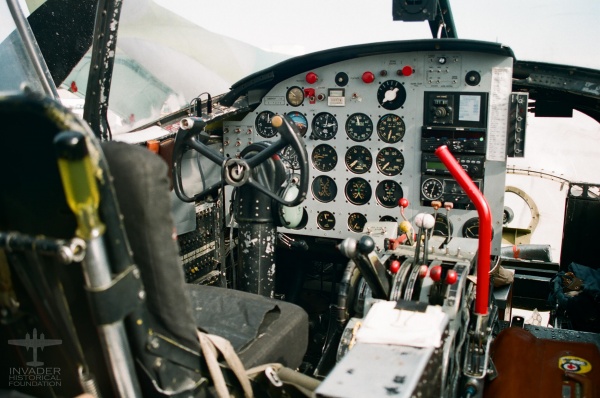Bombardier Nose
This page shows photos of the bombardier's nose. This page does show both military and civilian versions, but they are sorted accordingly.
Military Noses
This photo shows the crawlspace on the right side of the photo. Early model Invaders had a black canvas curtain separating the nose from the cockpit. There is also a vent (circular pipe) used to vent gun exhaust from the bombardier's nose just right of the flight control console. Based on the presence of this vent, it's location, and the curtain, this is most likely a block 15 plane. The curtain was not present on Block 20 planes and later, and the vent was moved to the other side on Block 20 planes. Block 10 and block 5 planes didn't have a vent.
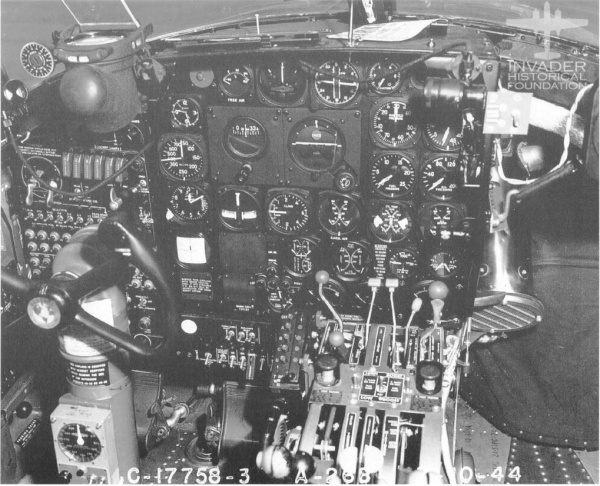
This photo shows the A-26C crawlspace between the cockpit and the nose. The view is from the bombardier's jump seat on the left side of the plane looking forward. The bag up front contains a parachute and emergency equipment for the bombardier. The round pipe near the center of the photo is a vent that is used to get the gun exhaust out of the bombardier's section. Interestingly, this nose does not have the Norden Bombsight installed.
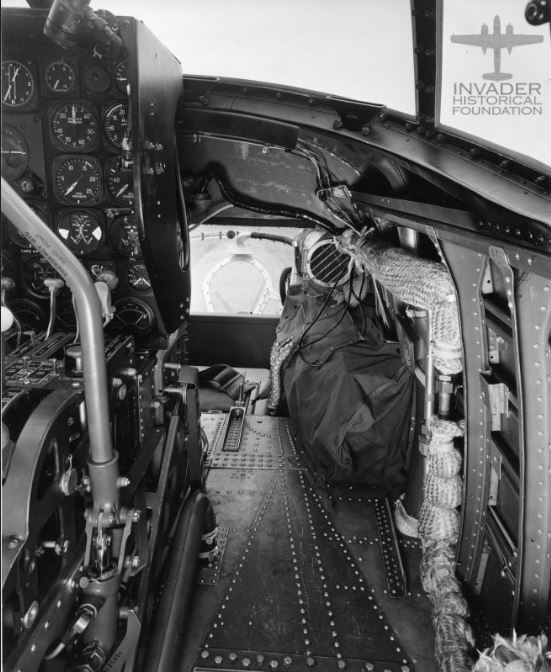
This photo shows a close up of the Norden Bombsight that was used in the Invaders. It was the same bombsight that was used in B-17s and other allied bombers during WWII. This color photo comes from the 13th Bombardment Squadron during the Korean War.
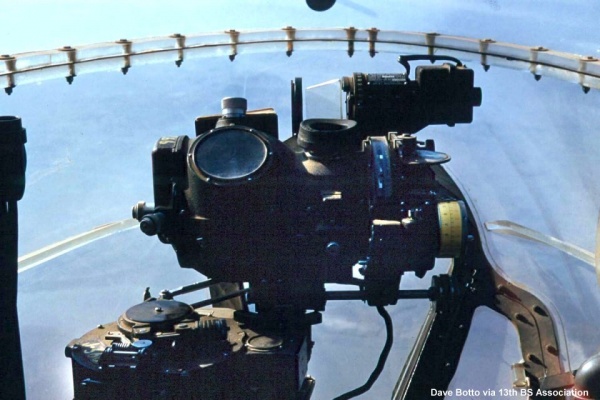
This black and white shows the Norden bombsight as it was installed during WWII.

This photo shows a late-model bombardier cockpit with the crawlspace visible on the right. Although the early production C-models came with 2x .50 caliber machine guns in the nose, this armament was removed in later models due to ongoing adverse affects on the bombardier crew.
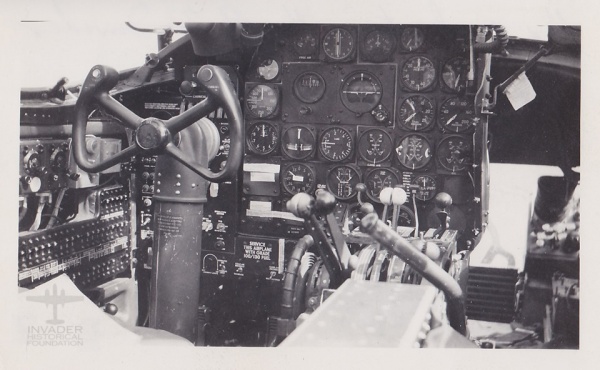
This photo shows the pilot seat of an A-26C model Invader during WWII.
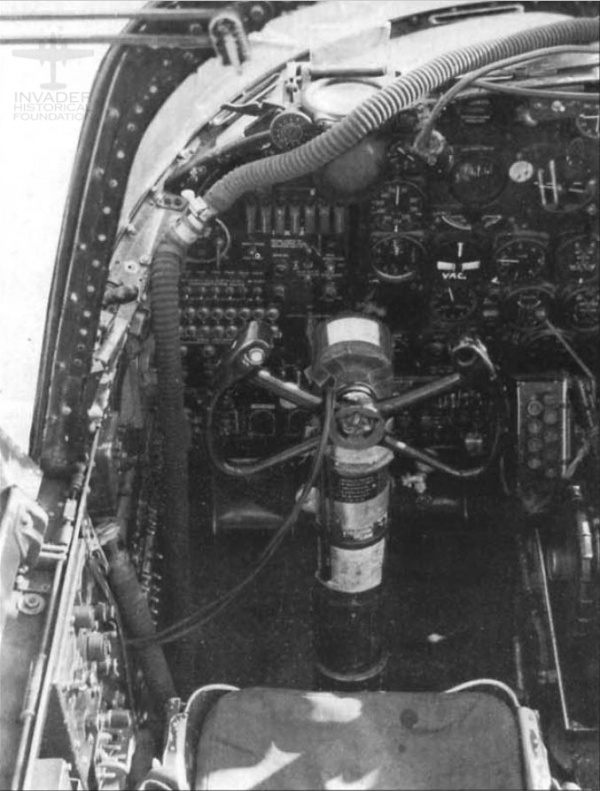
This photo shows the navigator's jumpseat of the above plane during WWII.

A wonderfully detailed illustration of the A-26C cockpit interior, drawn by Martin J. Simpson.
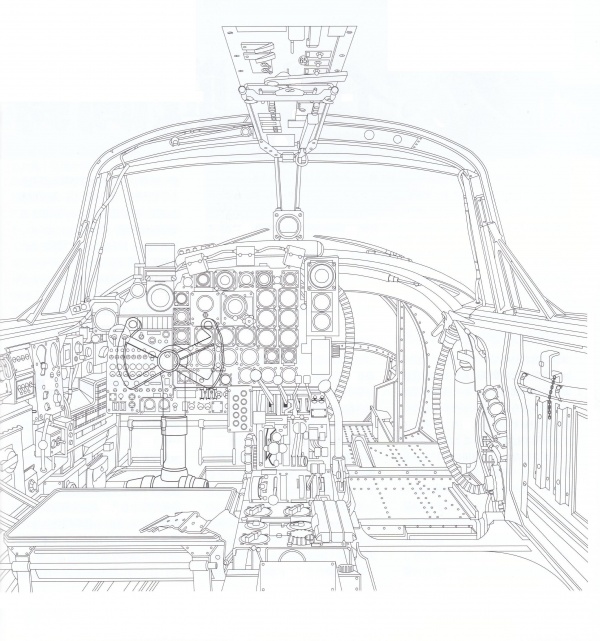
Instrument Panel
This is a full color representation of a typical A_26C instrument panel on a military plane. The primary difference between the C and B models is the configuration of some of the panels. The main panel in the center is identical between the planes. The B model does not have the small 4-gague attachment on the right side. Additionally, the panel on the left is configured differently on the B-model. Click the image for a larger view. According to the USAAF A-26 Pilot manual (pg. 16) the color sections of the instrument panels are new. "All new AAF aircraft will have color zones plainly marked on the faces of most of the instruments on the panel. As soon as possible, the instrument panels on all AAF aircraft now in use will be marked with the same color zones. This applies not only to the A-26, but to all other AAF as well."
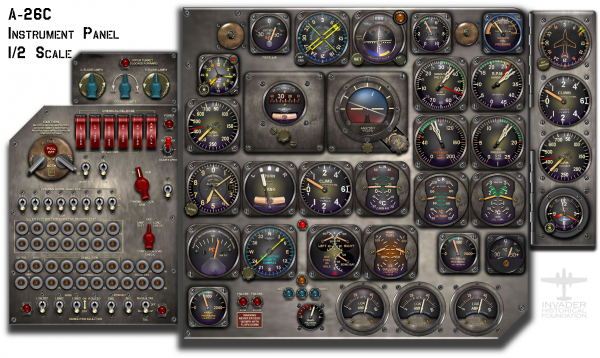
Civilian Noses
This shows the cockpit of civil registry N26BP, ex USAF 41-39359. In addition to the instrument panel being modernized, the paint job was redone in a grey and black pattern.
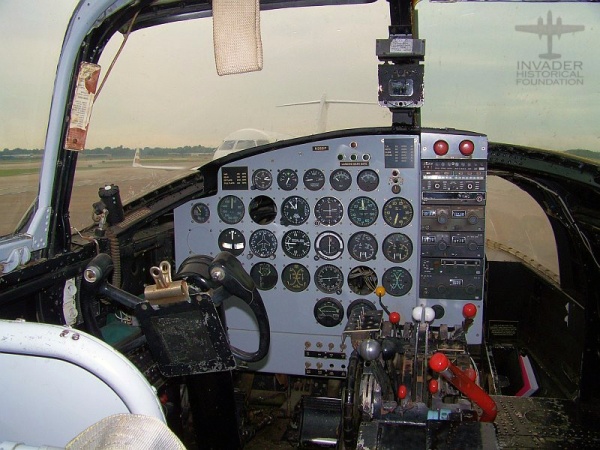
This photo shows N2852G, ex-USAF 44-35493, sporting a updated instrument panel.
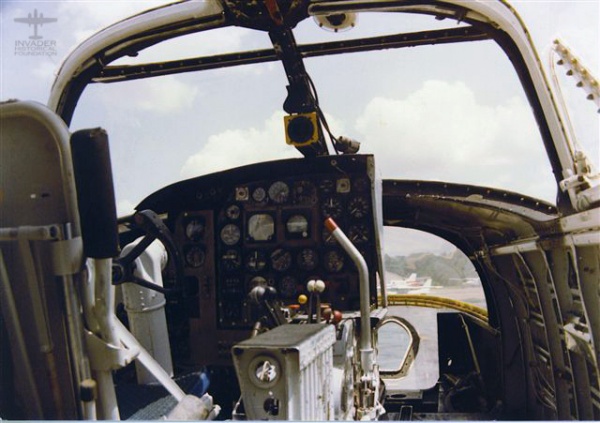
Airspray
This photo shows Air Spray Tanker #13, C-FZTC, ex-USAF 44-35857. This is a typical setup for Air Spray planes and all of their A-26s were finished in a similar manner.
